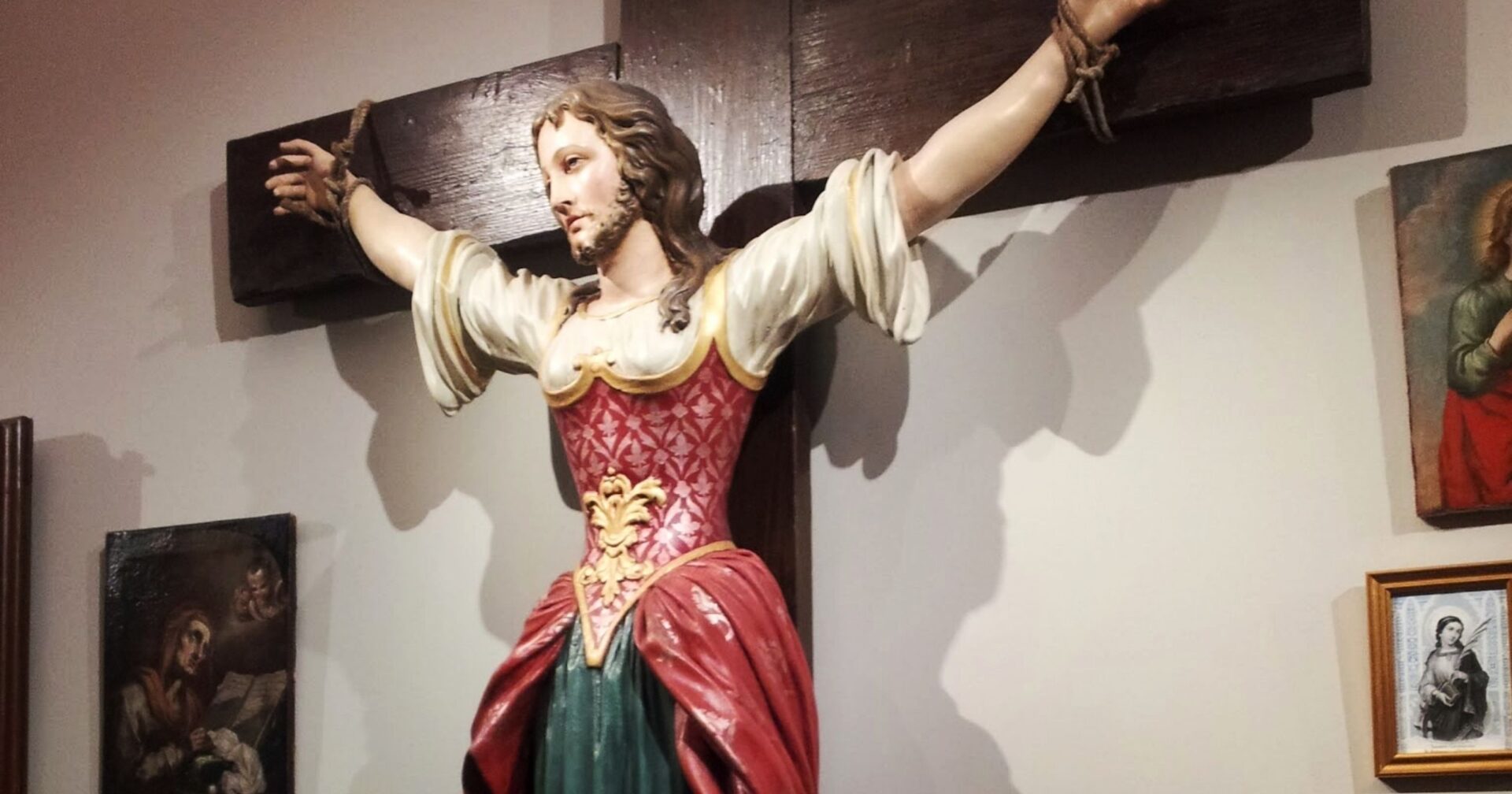In the 14th century, Saint Wilgefortis lived in the Roman province of Galicia which is approximately the present day Galicia in Spain.
Her father was a pagan Portuguese king with 9 daughters total and had promised a teen-aged Wilgefortis in marriage to the King of Sicily. Not wanting to be married off, she took a vow of virginity and prayed that God make her repulsive to her husband-to-be.
God answered her prayers, and Wilgefortis sprouted a beard. Her new appearance with a beard and mustache effectively ended the engagement, and in his anger over the engagement ending her father had her crucified.
In England she was known as Uncumber; in Dutch Ontkommer (meaning one who avoids something, here specifically other people from suffering); in German Kümmernis (grief or anxiety); in Italy Liberata; in Spain Librada (liberated); and in France as Débarras (riddance). Her name is a combination of the French Vierge for virgin and Forte for strong: Vierge-Forte and thus Wilgefortis.
Throughout the Middle Ages Saint Wilgefortis was venerated by people seeking relief from their tribulations, specifically women wanted to be disencumbered from abusive husbands. She is also the patron of facial hair.
Saint Wilgefortis’ feast day is celebrated on the 20th of July.
Photo credit: Gugganij via Wikimedia Commons















She certainly didn’t live in 14th century. Can ye repair that, please?
She has never been canonized by the Church. She is not recognized as a Saint. This needs to be corrected in you article, otherwise you are guilty of spreading a false teaching.
She is not a canonized saint by the Catholic Church. Please correct this false information. The legend surrounding her life arose in the 14th century but she was not born in the 14th century. This article is poorly written with a lot of false information.